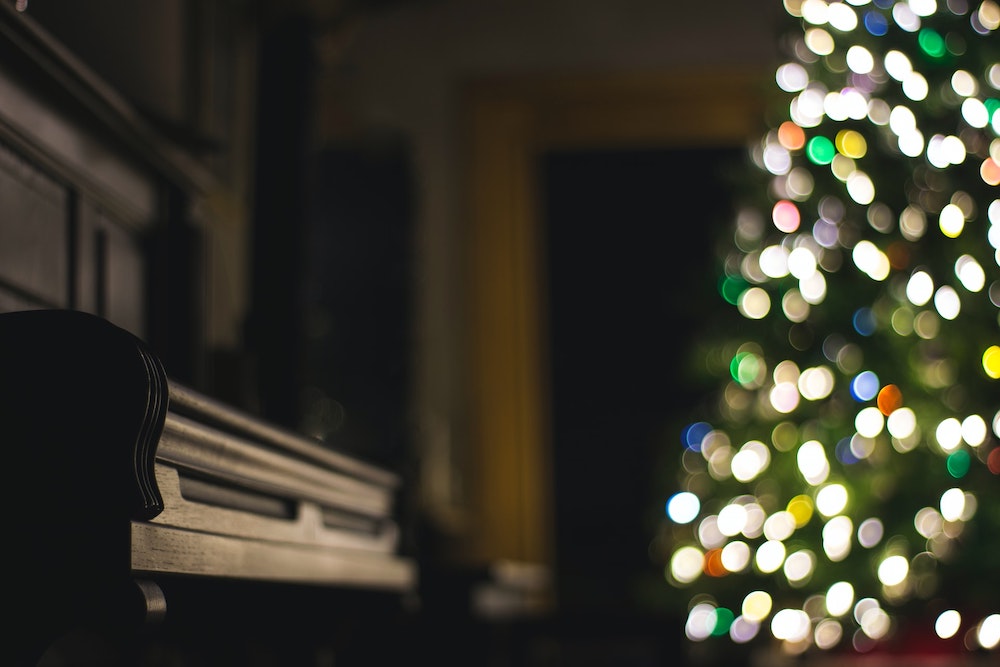
It is the music that transports me and these are the hymns that do it. (Unsplash/Steve Halama)
It is Christmas Eve. There are two times a year, Christmas and Easter, when the mystery of our salvation becomes so palpable and yet ineffable, that I find myself in the pew crying, unable to sing the final verse of a favorite hymn. I become aware at some deep, deep level of my heart that everything I read and write about the other 363 days of the year, all the discussions and arguments and analysis, all of it rises on the historic claims these two days represent. It is the music that transports me and these are the hymns that do it.
"Once in Royal David's City" is one of those songs which, once you have it performed by a particular group or person, no other iteration will do. In this case, the performers are the choir of men and boys at King's College Cambridge. The exquisite architecture helps put one in a reverential mood, and the development of the sound from soloist, to a capella choir, to choir and congregation with the chapel's magnificent Harrison & Harrison organ, and finally to a David Willcocks' descant in the final verse — well, it is as close to musical perfection as we humans can attain. Watch and listen here.
Advertisement
"Hark! The Herald Angels, Sing" is about as rousing as it gets, and the lyrics by Charles Wesley stir the heart. Still, in a nod to the composer of the tune, Felix Mendelssohn, I have selected this rendition in German, sung by the choir at Speyer Cathedral. The great Romanesque cathedral carries the music with what sounds like a full six seconds of reverberation. Just glorious:
Now for two selections that are not hymns, featuring two of my favorite, but very different, voices. First, the ethereal Kathleen Battle sings Johann Sebastian Bach's "Flößt, mein Heiland" from his Christmas Oratorio. Battle's voice is not large, but it is so exquisitely deployed when singing the Baroque repertoire, she really is second to none. And the back and forth with the oboe is delightful. Watch and listen here.

Jessye Norman, Dec. 5, 2014, at "Jessye Norman: In Conversation with Tom Hall" at the Walters Art Museum, Baltimore (Wikimedia Commons/Walters Art Museum/Jati Lindsay)
No one ever called Jessye Norman ethereal. Statuesque and dominant, Norman's voice here fills Ely Cathedral singing "O Holy Night." Is that a full choir singing behind her? Her voice soars above theirs effortlessly. This is the kind of romantic piece of music that does not usually move me, but having heard it for so many years sung terribly, a breathy soprano straining to hit the high note at the end and always falling short, listening to Norman, who left us in 2019, demonstrates the divine gift in a human voice like few others. Watch and listen here.
Finally, it wouldn't be Christmas Eve unless we sing "Adeste, Fidelis" or "O Come, All Ye Faithful." It should always be the entrance song at midnight Mass. It can be sung in Latin or English or both, but it should never be sung with newfangled words. (If you think you can improve on "Lo, he abhors not the Virgin's womb" and "we too will thither, bend our joyful footsteps," you are deceiving yourself.) The hymn should accompany the placing of the bambino in the manger with lots of incense. The congregation should sing all verses, and the organist should do a riff or two between the latter verses. In short, it should be done as it is here, at Westminster Abbey. Watch and listen here.





